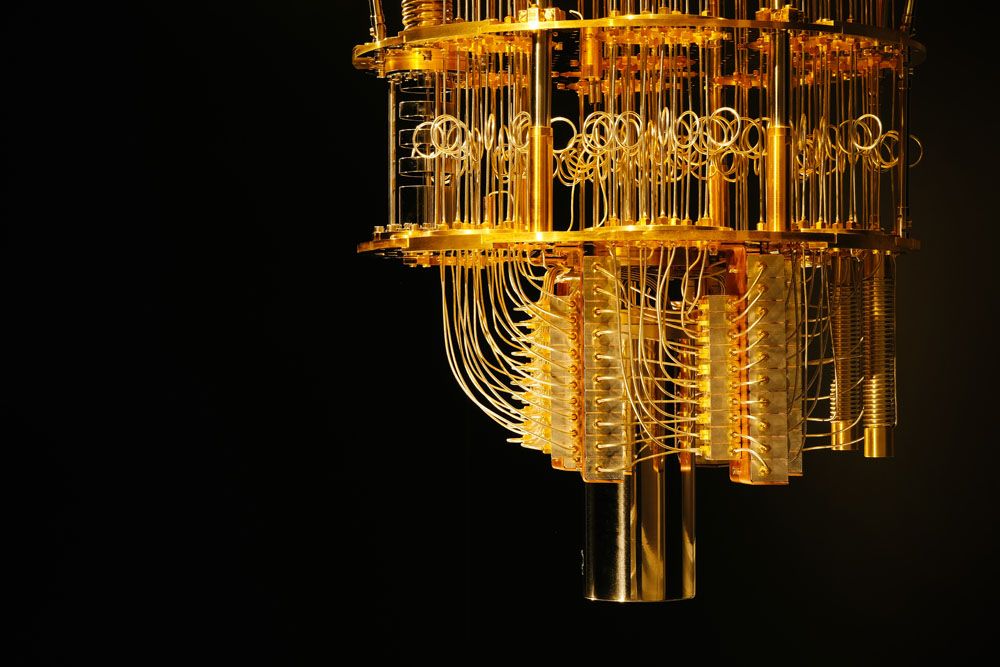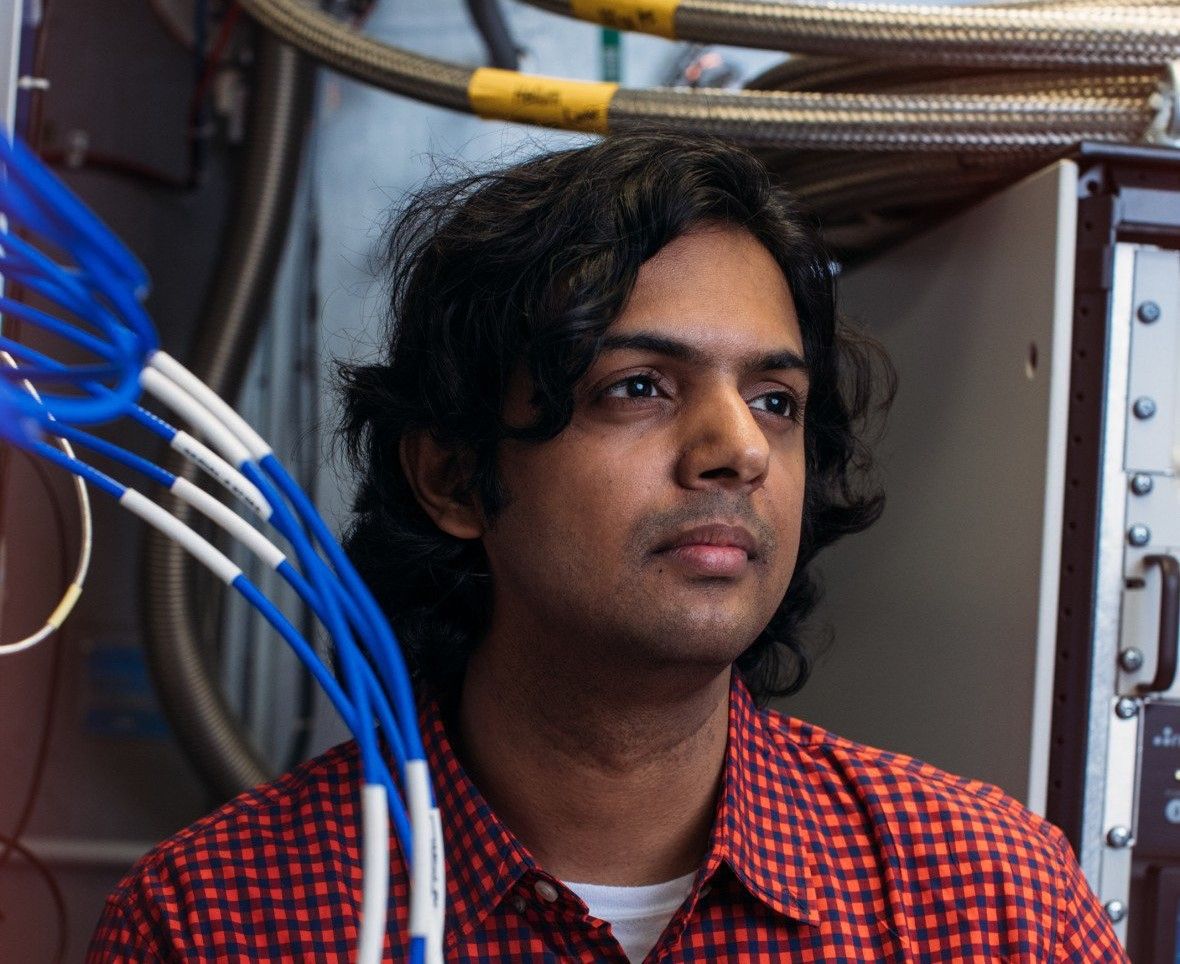IBM has made a significant step forwards in quantum computing; working around the “quantum noise” that introduces errors in calculations, to get reliable results at a scale “beyond brute-force classical computation.”
The techniques that enabled this milestone represent a “foundational tool for the realization of near-term quantum applications” claim the scientists behind the quantum computing milestone, in a June 14 research paper.
“It makes you optimistic that this will work in other systems and more complicated algorithms,” added John Martinis, a physicist at the University of California, Santa Barbara, who led a team at Google to their own 2019 milestone, speaking to Nature’s Davide Castelvecchi this week.

In a paper published in the prestigious journal Nature they detailed how they used a superconducting quantum processor called Eagle with 127 qubits to generate large, entangled states that simulate materials behaviour and accurately predict properties such as its magnetisation.
To verify the accuracy of this modelling, a team of scientists at the University of California, Berkeley simultaneously performed these simulations on advanced classical computers located at Lawrence Berkeley National Lab’s National Energy Research Scientific Computing Center (NERSC) and Purdue University, IBM explained on June 14.
CNOTs and superpositions: A quantum refresher
Classical computing deploys “bits” that use the 0 and 1 vocabulary of binary code. Quantum computers use “qubits” that draw on two-state quantum-mechanical systems – the ability of quantum particles to be in “superposition”; two different states at the same time.
As IBM Research’s Edwin Pednault puts it: “A qubit can represent both 0 and 1 simultaneously – in fact, in weighted combinations; for example, 37%-0, 63%-1. Three qubits can represent 2^3, or eight values simultaneously: 000, 001, 010, 011, 100, 101, 110, 111; 50 qubits can represent over one quadrillion values simultaneously.”
Whilst classical computing circuits use ANDs and ORs and NOTs and XORs (binary gates) on which users build up higher level instructions, then support for languages like Java, Python, etc., quantum computers use different kinds of gates like CNOTs and Hadamards.
Those looking to explore how to work with quantum computing could do worse than take a deep dive into Qiskit; an open-source software development kit (SDK) with extensive documentation for both the hardware and software layer and for working with quantum computers at the level of circuits, pulses, and algorithms. Qiskit also has several domain specific application APIs on top of its core module.
Learn more here.
For quantum computing to work effectively, calculations need to keep going in superposition for the duration of the computational cycle.
But they can easily be thrown off by noise ( “the central obstacle to building large-scale quantum computers”) which could stem from diverse sources including disturbances in Earth’s magnetic field, local radiation, cosmic rays, or the influence that qubits exert on each other by proximity.
This is in part tackled physically: signals for configuring and programming a quantum computer come from outside the machines, travel down coaxial cables where they are amplified and filtered, and eventually reach the quantum device with its qubits at ~0.015K (-273.135 degrees C) and noise tackled by minimising the exposure of the chips and cables to heat and electromagnetic radiation in all its forms, by minimizing device defects, by constantly improving the performance of the electronics, and by using all sorts of novel mathematical schemes to compensate for noise.
The team demonstrated both hardware performance improvements and creative use of noise mitigation techniques to achieve the result.
IBM quantum computing breakthrough

In the paper on the IBM quantum computing milestone, a team including IBM physicist Abhinav Kandala conducted precise measurements of the noise in each of their qubits, based on an understanding of their position inside the device, imperfections in its fabrication and were then able to run calculations involving all of Eagle’s 127 qubits and up to 60 processing steps assuming the absence of noise; a genuine breakthrough and more steps than any other reported quantum-computing experiment.
The authors said, in more modest academic tone: "The observation that a noisy quantum processor, even before the advent of fault-tolerant quantum computing, produces reliable expectation values at a scale beyond 100 qubits and non-trivial circuit depth leads to the conclusion that there is indeed merit to pursuing research towards deriving a practical computational advantage from noise-limited quantum circuits."
The experiment was run across quantum circuits with up to 60 layers of two-qubit gates, a total of 2,880 CNOT gates. Here, also, IBM made some unique progress: “The speed of cross-resonance-based CNOT gates is dependent on the qubit–qubit detuning and, typically, gate speeds across the device are chosen independently to minimize individual gate errors… the speed of each parallelized CNOT layer is limited by the slowest gate in the layer, we develop a new tune-up scheme for large-scale processor calibration that optimizes the layer rather than the individual gates.
“First, the control and target qubits are assigned to each gate layer to reduce crosstalk and leakage from transmon-frequency collisions. The slowest gate in each layer then has its duration carefully optimized. Finally, all gates in the layer are fixed to this duration and calibrated simultaneously with error-amplification sequences. Compared with independently calibrated gates, the layer duration is unchanged, but gates are slower with lower drive amplitudes, reducing any leakage arising from multi-photon transitions. The simultaneous calibration also ensures that the gates are calibrated as they are implemented in the circuit.”
They concluded: "Impending order-of-magnitude improvements in gate fidelities and speed of superconducting quantum systems will drive substantial enhancements in accessible circuit volumes and paint an increasingly bright picture of the utility of noisy quantum computers."
Following the research, IBM says its IBM Quantum systems running both on the cloud and on-site at partner locations will now be powered by a minimum of 127 qubits. As part of its quantum computing roadmap, IBM also expects to create a 1,121-qubit Condor chip, later this year
Interested in quantum computing?
Explore the well-documented Qiskit: an open-source SDK for working with quantum computers at the level of pulses, circuits, and application modules









